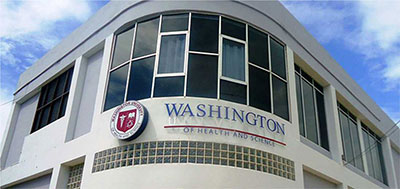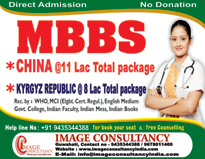AMA College of Medicine
| Fees Structure |
AMA School of Medicine (AMASOM) is the medical school of AMA Education System (AMAES). It is housed in AMA College Makati, which is strategically located at the heart of Makati City, the Philippines' financial and business capital where the highest concentration of multinational, transnational and local corporations and international organizations and embassies hold their offices. The AMASOM office is at the 8th floor of AMA College Makati, which is located at 5486 South Superhighway, Bangkal, Makati City.
AMASOM has several facilities that are used for enhancement of studentsí clinical and practical skills including laboratories for Histology, Gross Anatomy, Microbiology, Parasitology, and Pathology. Students perform hands-on dissection of cadavers in Gross Anatomy. These facilities as well as classrooms for Medicine students are situated at the 7th floor of the AMA One Building.
AMASOM aims to produce competent medical practitioners who are educated on an innovative case-based curriculum that will develop students to become self-directed and lifelong learners - qualities that will prepare them for professional practice. This is a hybrid curriculum designed to synchronize the basic science concepts and to utilize case-based scenarios to integrate concepts related to the basic science disciplines. The clinical disciplines are integrated vertically using a problem-based learning strategy to integrate concepts in the clinical disciplines. The AMA Medical Curriculum incorporates Information Technology-based capabilities to enhance learning and assessments, as this is strength that is offered by AMAES.
The four-year curriculum equips the students with clinical reasoning, problem-solving and critical thinking skills with emphasis on interdisciplinary and life-long learning. The first three years provide the students with an integrated understanding of the basic and clinical sciences in the classroom and community settings. The fourth year of the curriculum is devoted to the application of the basic and clinical concepts in actual clinical and community settings.Selected subjects which include ethical and legal aspects of the practice of medicine, epidemiologic and health research programs and the practice of profession enhance the medical curriculum.
The medical curriculum also employs various teaching-learning and assessment strategies to achieve the educational goals. As early as the First Year, the students are exposed to cases that would allow them to relate basic science concepts to clinical practice. The First Year of the curriculum is designed as modules or blocks based on organ systems with similar or related functions. This instructional plan aims to synchronize topics in Anatomy, Biochemistry and Physiology. Correlation of selected concepts will be achieved through case discussion in a problem-based tutorial session, team learning and case method activities.
The Second and Third Years of the curriculum are a continuum of organ-based modules that integrate basic and clinical concepts. Problem-based learning (PBL) is a principal teaching-learning activity augmented by correlate activities as lectures, laboratory exercises and case method discussions. The students in a PBL small group setting (ratio of 1 tutor to at most 10 students) encounter and discuss problems common to practice.
The Fourth Year, which is the final year, allows the students to learn from clinical materials in affiliate hospitals and community settings.
Evaluation of student performance is based on the curriculum design where small group learning is a predominant activity. Assessment includes written examinations, practical examinations, clinical observations, and tutorial or case discussion participation and attitude development.
AMASOM boasts of a faculty from different excellent academic academic backgrounds and fields of specialization.
In summary, AMASOM is a student-centered Medicine school with the following features:
∑ Four-year integrated curriculum with an ideal faculty-to-student ratio
∑ Clinically oriented and problem-based method of teaching and learning∑ Non-traditional lecture and instructional modules
∑ Hands-on anatomy dissection
∑ Faculty established in their chosen fields of specialization and in the academe
∑ Affordable, flexible payment schemes
∑ Affiliated with government hospitals and private health institutions
∑ Outstanding facilities and resources conducive to learning
The MD degree at AMASOM is recognized by the Medical Council of India (MCI) as equivalent to the Bachelor of Medicine and Bachelor of Surgery (MBBS) degree similarly offered in the UK, Australia, India and other Commonwealth countries. After their MD graduation from AMASOM, Indian students will be given a license to practice in India similar to the MBBS doctors from India after completion of licensing formalities with the MCI.








